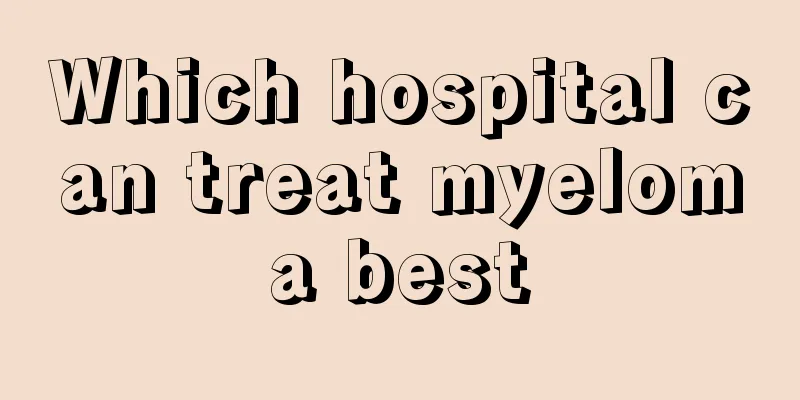Will anemia cause thrombocytopenia? Is it better to prevent it in this way?

|
Studies have found that some relatively acute infectious diseases are the key factors leading to thrombocytopenia. Anemia will not cause thrombocytopenia to a certain extent. In addition, abnormal bleeding can also cause this disease. 1. Causes of thrombocytopenia It usually results from antibodies (protective biochemicals) made by the body attacking its own platelets. Certain acute infections are the underlying cause of this disease. Taking certain drugs (such as sulfonamides, organic arsenic, quinidine, etc.) to treat diseases, too much blood transfusion in a short period of time (such as during major surgery), or abnormal bleeding and clotting may cause thrombocytopenia. 2. Prevention of thrombocytopenia Eat more foods and vegetables high in iron, such as blood tofu and leeks, and see a doctor according to your own conditions and circumstances. Peanut and Codonopsis Soup: 6g peanut skins, 10 red dates, 10g Codonopsis. Add water to peanut skins, red dates and Codonopsis pilosula in a casserole and cook them into soup. Discard the Codonopsis pilosula and peanut skin residues, and eat the red dates and drink the soup. This is the daily amount, to be taken in 2 doses. This medicinal food has the effects of nourishing the heart and spleen, replenishing qi and absorbing blood. It is effective for physical weakness after illness and thrombocytopenic purpura. In acute cases, bleeding is severe within 1 to 2 weeks of onset. Therefore, in the early stages of the disease, activities should be reduced and trauma, especially head trauma, should be avoided. Severe cases should rest in bed. Infection should be actively prevented and controlled. Aspirin can cause bleeding and should also be avoided. Give enough fluids and easily digestible food to avoid damage to the oral mucosa. To reduce the bleeding tendency, large amounts of vitamin C and P are often given. For local bleeding, apply pressure to stop the bleeding. No special treatment is required in general cases. If the bleeding is severe or intracranial hemorrhage is suspected, various hemostatic measures should be actively taken. Chronic cases do not require special treatment if the bleeding is not severe or during remission, but trauma should be avoided and infection should be prevented. Sometimes a minor respiratory infection can cause a serious relapse. Special treatment should be given to patients with severe bleeding or long-term uncured bleeding. 1. Transfuse fresh blood or platelets. 2. Adrenal cortex hormone. 3. Administer large doses of immunoglobulin intravenously. 4. Immunosuppressants. 5. Splenectomy therapy. |
<<: Clinical significance of glycosylated hemoglobin
>>: What's wrong with the dent in the middle of the fingernail?
Recommend
Darts Tips
Darts is a common fitness and entertainment activ...
What are the main causes of lung cancer? 3 factors are likely to induce lung cancer
The incidence of lung cancer is increasing year b...
What are the characteristics of nose bleeding in nasopharyngeal carcinoma?
What are the characteristics of nose bleeding in ...
What are the ways to lower your heart rate
We all know that a normal person's heart rate...
How to tell if eyelashes are growing backwards
In our lives, many people have eyelashes that gro...
How to make your buttocks bigger and more perky
Many women undergo body shaping in order to be mo...
Why do I have urinary incontinence when coughing?
Urinary incontinence when coughing is because the...
How to make rock sugar lemon paste
Rock sugar is widely used in life. It can be held...
How to motivate employees
Life requires people to manage it better, and the...
Can mid- to late-stage colorectal cancer be cured?
Can mid- to late-stage colorectal cancer be cured...
If hoarseness does not heal for a long time in winter, you should be alert to laryngeal cancer
Winter is the peak season for respiratory disease...
When is the best time to eat raw garlic
In life, some people have the habit of eating raw...
When is the best time to treat gallstones
If you suffer from gallstones, you must pay atten...
What exercises can people with brain cancer do
As the saying goes, running water never rots, and...
What are the effects of Yunhua Shuigu San
Yunhua Shuigu San is a health food. It has a cert...









